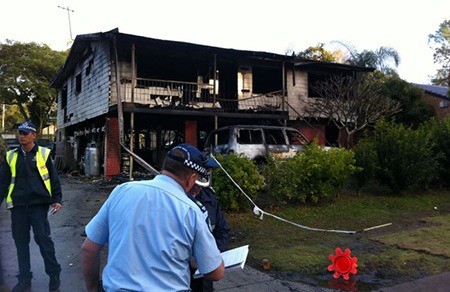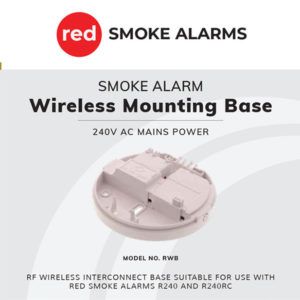
From January 1, 2017 Queensland Government legislation was introduced to improve public safety. This legislation should also be considered a minimum requirement accross Australia.
The legislation applied to all dwellings across the state, and specifies the type, placement and operation of smoke alarms in homes. The laws will be phased in over 10 years, at different rates for new and existing homes, and aim to make sure all houses in Queensland are fitted with effective smoke alarms to prevent loss of life.
Why were the new laws so important requiring all homes install Interconnected, Photoelectric Smoke Alarms in Queensland?

Fire and Emergency Services Minister Bill Byrne introduced the bill in September 2016 in response to the coroner’s report on Australia’s worst house fire. Eleven people, including eight children were killed in the 2011 house fire in Slacks Creek, south of Brisbane. At the time of the fire, two smoke alarms were fitted in the house, but neither had worked for a number of years. In his findings, Coroner James McDougall stated there was a “reasonable prospect that all or some of the victims could have escaped” had the smoke alarms been working at the time of the fire.
Queensland Compliant Wireless Interconnected Smoke Alarms


Queensland Fire and Emergency Services Commissioner Katrina Carroll says that working smoke alarms are critical in all homes, with research indicating they reduce the risk of death in a house fire by up to 50%. She welcomes the law’s requirement that photoelectric alarms be used. “Photoelectric smoke alarms are more effective at detecting a wider range of fires and are good at sensing smouldering fires or thick smoke,” she says.
What Do the New Laws Mean for You?
To comply with the new laws, all Queensland homes must have smoke detectors installed in every bedroom and every hallway or area that connects the bedrooms to the rest of the house. There must also be at least one smoke alarm on every storey.
All homes must be fully compliant with the legislation within the following time frames:
- From 1 January 2017: new and substantially renovated dwellings that submit their building applications after 1/1/17
- From 1 January 2022: all domestic houses that are sold or leased
- From 1 January 2027: all other domestic dwellings.
The legislation requires that all smoke detectors used in homes must be photoelectric, hardwired to the electricity supply and interconnected. Interconnected smoke alarms warn everyone in the house if there’s a fire – if one is triggered, all the smoke alarms will be set off. You’ll need a qualified electrician to hardwire your smoke alarms, plus, they’ll also need a backup battery.
As part of the phasing-in period, there is some measure that is effective immediately for each type of dwelling, as outlined below.
Existing Dwellings
From 1st January 2017, when replacing smoke alarms in existing homes, they must be of a photoelectric type that complies with Australian Standard (AS) 3786-2014.
Check all your smoke alarms and replace any that don’t operate when tested, and any that were manufactured more than 10 years ago (the date of manufacture should be stamped on the smoke alarm). If you have any existing hardwired smoke alarms, they must be replaced with a hardwired photoelectric alarm that complies with the above standard.
Dwellings Being Sold, Leased or An Existing Lease is Renewed
From 1st January 2017, the requirements are the same as for the existing dwellings above. Existing landlord’s and tenant’s obligations regarding the installation and testing of smoke alarms still apply. When a property is sold, the vendor must continue to lodge a Form 24 with the Queensland Land Registry Office stating the requirements of the smoke alarm legislation have been met.
New Dwellings and Dwellings Being Substantially Renovated
From 1st January 2017, any applications lodged to build or substantially renovate will need to fully comply with the new laws as a condition of approval.
Placement of Smoke Alarms
Smoke alarms should be placed on the ceiling where possible and should not be positioned:
- within 300mm of a corner of a ceiling and a wall
- within 300mm of a light fitting
- within 400mm of an air-conditioning vent
- within 400mm of the blades of a ceiling fan.
If you have stairways, sloping ceilings, or ceilings with exposed beams, there are specific requirements explained in the Building Fire Safety Regulation 2008 that need to be followed. Always be guided by your own unique circumstances – if the recommended placement locations are impractical (e.g. may be affected by steam from the shower or fumes from the kitchen), then you should place your alarm in another position that will provide adequate warning to occupants.
Over to You
Have a question about photoelectric smoke alarms? Our team are happy to help! Or do you already have interconnected hardwired alarms in your home and have some tips for other homeowners? Share with our readers on the EvacuLife Facebook Page

